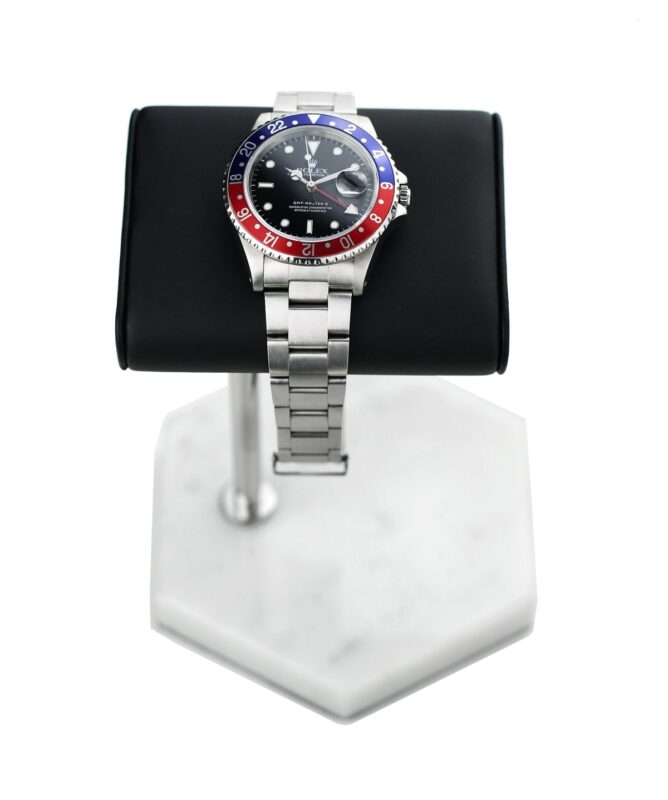Rolex GMT-Master II

This watch was eagerly awaited, and at Baselworld 2018, it finally arrived: a stainless steel GMT Master II with the legendary Pepsi bezel is back. It was first launched in this design in 1955, back then under the reference 6542. The watch was designed by Hans Wilsdorf, who created a model whose design today makes the hearts of more than just connoisseurs beat faster.
The distinctive feature of the GMT Master's appearance was, and still is, the reddish-blue bezel. It was precisely this color scheme that earned the model the Pepsi nickname among enthusiasts shortly after its initial release. This name originates from the Pepsi Cola brand name of the same name, which had been represented in the colors red, white, and blue since 1950.
The development of the GMT Master originated from a request from Pan American Airlines, which was looking for a watch for its cockpit crew that could display two different time zones simultaneously. Hans Wilsdorf's design impressed Pan Am management so much that they equipped their cockpit and ground crew with the watch.
Rolex last relaunched this striking design in 2014. It was made of white gold and was therefore priced significantly higher than a steel version. While the reissue delighted many Pepsi GMT Master fans, it also fueled the desire for a stainless steel model. In addition to the significant price difference, the steel versions of Rolex models are also considered particularly durable and precise watches. In the past, anyone wanting to purchase a new stainless steel GMT Master II had to settle for the so-called Batman version. It got its name from its black-and-blue bezel.

So what are the differences to the last version of the Pepsi GMT Master II in white gold?
As expected, there are some key technical innovations, such as the Rolex caliber 3285 in-house movement. First, the new steel version features a Pepsi bezel made of Cerachrom, which is also found on the white gold version. This means the bezel is not only scratch-resistant, but its colors also won't fade over time. It's also slightly wider than its predecessor.
A very striking innovation on the GMT Master II Pepsi is the Jubilee bracelet from Rolex, which replaces the original Oyster bracelet. The Jubilee bracelet was first introduced in 1945 with the Rolex Datejust. The name Jubilee originates from the company's 40th anniversary after its founding in 1905. The new bracelet consists of five connected parts, which are intended to offer special wearing comfort. Like the case, the bracelet is made of stainless steel, with the combination of brushed and polished steel creating a particularly high-quality style. It may be important for many that the Jubilee bracelet on the new GMT Master II is not interchangeable with an Oyster bracelet. At the same time, conventional Watch straps be worn on the watch.
Another new, invisible but very important detail in the watch is the movement. This new version replaces the caliber 3186 with the caliber 3285. This marks the first time the GMT-Master II features the Chronergy escapement, developed by Rolex and first introduced in 2015. The advantages include improved lever geometry and greater efficiency. The Parachrom hairspring also offers greater resistance to magnetism thanks to new alloys. It also offers significantly better resistance to shocks and temperature fluctuations. Last but not least, the power reserve has been increased from 48 to 70 hours. This means the watch can be stored for almost three days after it has been fully wound without needing to be reset.
The high demand and long waiting time indicate a clear success of the new GMT Master II, even though the Jubilee bracelet visibly differs from its original appearance. Our leather bracelets can be worn excellently with the new steel version.


